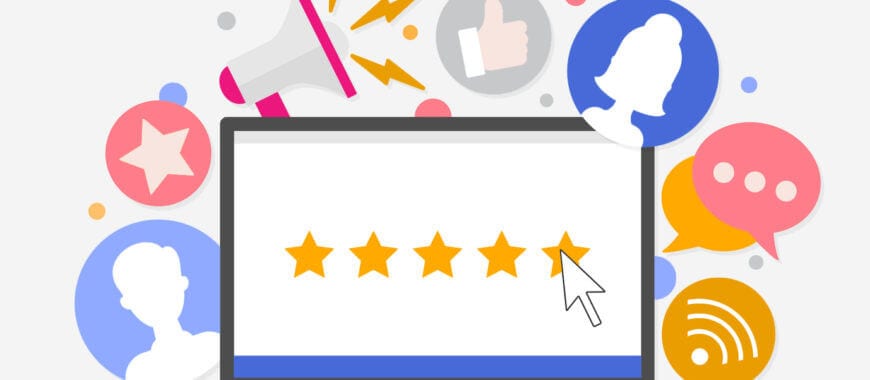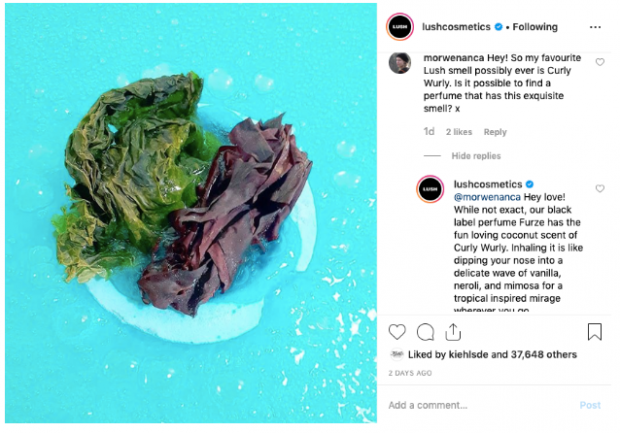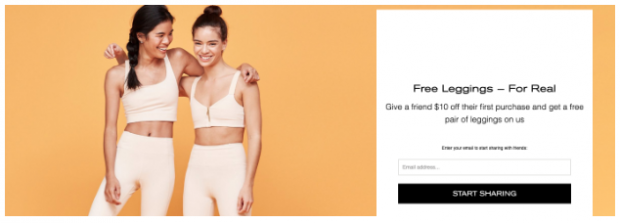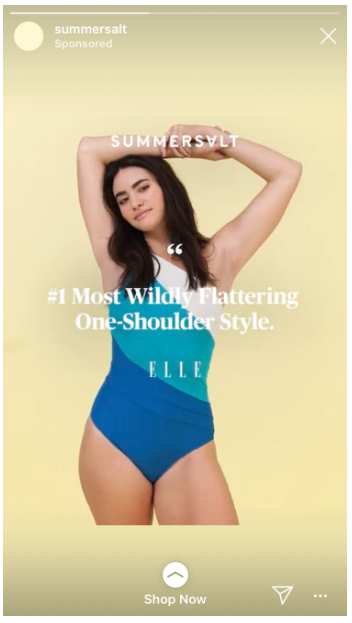Continue with how to use social proof in your marketing strategy…
5. Social media engagement
One of the easiest examples of social proof is our tendency to follow the crowd. If lots of people like something, we tend to love it too.
That does not mean you need millions of fans to prove your value.
Having a big audience on social media is a great indicator of popularity, however, smaller crowds could be powerful too if they are highly engaged. Having a lot of likes, comments, and shares on your social posts show the personal side of your brand, and helps to build trust.
That is because 2019 audiences are wise to the fact that large audiences can be bought, however, you could not fake relationships with your fans.
LUSH is one brand that’s good at conversing on social. It not only will increase their engagement but also permits them to share more product info and recommendations.
There is no shortcut to engaging on social media. You want to make the effort to listen and reply thoughtfully.
However, the payoff is huge, as it builds loyalty and strengthens your brand reputation among your fans. And as Instagram experiments with hiding the number of likes on posts, this type of visible engagement are more essential than ever.
When you are looking to increase your brand’s engagement on social, consider running an awareness campaign. A focused effort for a limited period of time could help improve your visibility and build your audience.
6. Brand mentions
Beyond your own channels, another invaluable form of social proof is positive social mentions about your brand on other accounts. Social listening means tuning in to discussions about your company (and your competitors) that take place online and utilizing that info to guide your marketing strategy.
In addition to collecting those insights, you need to be responding to them and amplifying them on your own channels. Consider them as mini-testimonials.
Glossier is good at incorporating those mentions into product launches and campaigns:
Likewise, Monday.com amplifies positive social media mentions across their own channels:
https://www.instagram.com/p/BihIJ19BRzz/?utm_source=ig_embed
7. User-generated content
Just like brand mentions, user-generated content features your brand or product on social media. These might be unsponsored posts by influencers or well-known figures, or they might just be nice posts by regular customers and fans.
Amplifying these posts is an awesome method to recognize your customers, and benefit from stellar pictures or videos. When you have well-known customers, that is even better.
For instance, Aritzia frequently reposts images of celebrities wearing their clothing:
https://www.instagram.com/p/ByWP6ntgkUV/?utm_source=ig_embed
Make it simple to collect user-generated content by making a branded hashtag. For instance, followers of luggage firm Away use #travelaway in their posts:
Likewise, Madewell encourages their followers to use #everydaymadewell for an opportunity to be featured on their channels:
https://www.instagram.com/p/Byu_CPVFLgw/?utm_source=ig_embed
Want more details? Right here’s a primer on using user-generated content in your own social media.
8. Referral marketing
Referral marketing relies on current customers to refer new customers directly. It is one of the most invaluable types of social proof, because people trust a recommendation even more if it comes from somebody they know.
Referral marketing programs generally provide a perk or incentive to customers, which spurs them to reach out to family and friends. For example, Girlfriend Collective athletic wear provides free leggings in exchange for referrals:
Likewise, newsletter community Girls’ Night In provides rewards and recognition to members who get their friends signed up. Referrals drive 60% of their growth, and have helped them reach more than 150,000 subscribers.
You could also combine influencer marketing with a referral program, by making unique codes for individual brand partners:
9. Media mentions
We all know you love social as a lot as we do, however, don’t forget about traditional media! News websites and magazines are still trusted sources for many audiences, as well as a key channel for introducing them to your brand.
Like testimonials and user reviews, media mentions provide a trusted third-party endorsement of your brand. Major media outlets could have the most impact here, however, when you are a niche brand you might find smaller, industry-specific publications equally valuable.
There are a few methods to incorporate media mentions into your marketing strategy.
Allbirds footwear has a roundup of notable media mentions on their homepage, for instance:
And Summersalt swimwear uses these social proof examples in their Instagram Story adverts:
10. Exclusivity
Many of those social proof examples concentrate on being as available and present as possible to customers—well-represented on review websites and influencer accounts, for example.
However, there’s another method to pique your customers’ interest and get them interested in your brand: exclusivity.
FOMO (the fear of missing out) is real and motivating.
That’s why Doug and Steve Butabi wanted to spend a night at the Roxbury so badly. That’s why we jump on flash sales and limited-time offers, and pre-order from our favorite brands in order to get our hands on something early. It’s the science behind why Kylie Jenner’s skincare line sold out in four minutes.
When a resource is scarce, our caveman’s brains tell us to act quick.
For small brands, this can be a particularly smart technique. You might not have the resources to produce massive runs of each product, or ship on demand. Reframing this limited availability as a function of your brand could add to your cachet.
Everlane is a professional at this, by offering waitlists for upcoming products on their Coming Soon page. You could curate a similar page, or encourage customers to subscribe to your newsletter to find out when new services or products are dropping.
Bigger brands like Warby Parker also leverage exclusivity via limited-edition collaborations with well-known brands or celebrities.
You could also tap into FOMO on social media. Realization Par uses social media to announce restocks of their Instagram-famous skirt, frequently leading to flurries of excitement from die-hard fans:
Having one of your products sell out (and then advertising the truth that it’s sold out) is social proof because it shows that other people purchased and enjoyed it, turning it into a highly sought-after item.
Now that you have lots of ideas for how social proof could benefit your brand, it’s time to begin incorporating them into your marketing strategy. You will be harnessing the power of the crowd very quickly!





